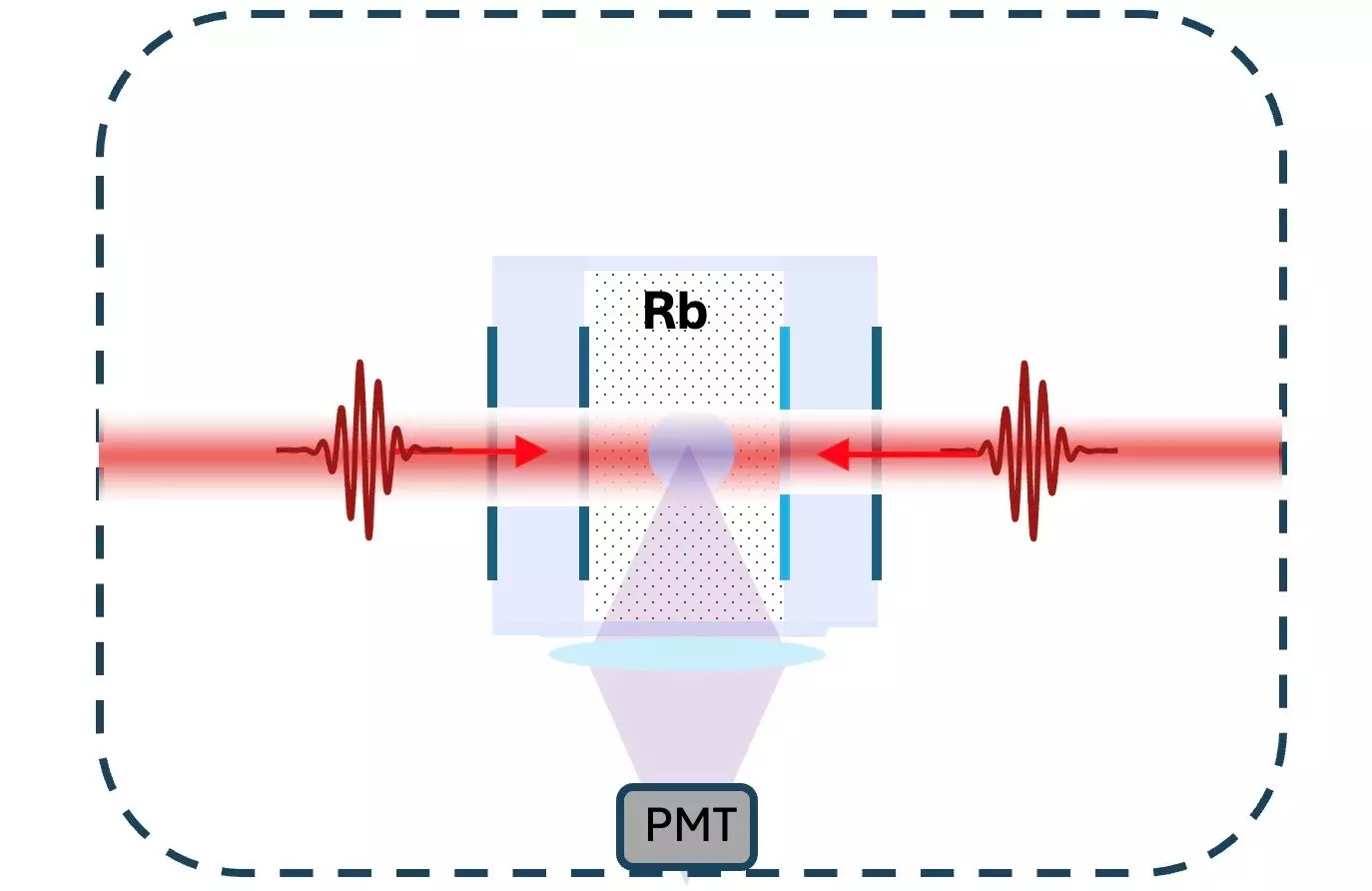In a remarkable advancement for precision timekeeping, researchers have unveiled a new optical atomic clock design that significantly simplifies the technology while maintaining highly accurate performance. Traditionally, optical atomic clocks required a complex setup involving multiple lasers and extreme cooling conditions, often at temperatures close to absolute zero. The latest innovation, spearheaded by Jason Jones from the University of Arizona, utilizes a single laser equipped with a frequency comb—an ingenious solution that not only enhances the portability of these clocks but also paves the way for their practical application in everyday life.
Frequency combs are a groundbreaking evolution in laser technology, producing thousands of discrete frequencies or colors within a narrow spectrum. These devices have transformed the landscape of atomic clocks by providing a means to directly excite atomic transitions, notably in rubidium-87 atoms. An optical atomic clock operates by measuring the frequency of these transitions, which requires precise control over the photonic input interacting with the atoms. The simplification brought forth by Jones’ team avoids the elaborate configurations of traditional systems, eschewing the need for multiple lasers while ensuring high stability and accuracy.
By employing two-photon transitions, Jones and his collaborators have creatively circumvented the challenges posed by atomic motion. In this new design, two photons travel toward the atom from opposite directions, allowing any motion-induced frequency shifts to cancel each other out effectively. This advancement opens up the possibility of using atoms at much higher temperatures—up to 100ºC—thereby eliminating the need for cumbersome cryogenic setups. The use of a frequency comb, rather than a single-color laser, further streamlines the process, allowing the clock to utilize a broad swath of frequencies, providing a more flexible and efficient excitation method.
The practical applications of this breakthrough extend well beyond the confines of the laboratory. The improved optical atomic clocks can potentially enhance the Global Positioning System (GPS), which is heavily reliant on satellite-based atomic clocks. By offering higher performance and creating accessible backup options, this technology could dramatically improve the reliability and accuracy of navigational systems. Furthermore, the potential integration of these compact atomic clocks into everyday telecommunications infrastructure could revolutionize data transmission. Faster switching capabilities enhanced by the new clock design may allow for an exponential increase in the number of concurrent communications over the same channels.
In a world that demands ever-increasing precision and efficiency, the advent of portable atomic clocks could have far-reaching implications across various sectors, from telecommunications and aviation to finance and cybersecurity. Enhanced timekeeping technology will underpin innovations that rely on precise synchronization, allowing for smoother operations and reduced latency in data exchanges.
The research team conducted rigorous comparisons between their new design and a traditional clock utilizing a distinct single frequency laser. The results indicated that the portable clock demonstrated impressive stability with instabilities of 1.9×10^-13 at one second, averaging down to 7.8(38)×10^-15 over a span of 2600 seconds. These figures reflect a performance that aligns closely with conventional optical atomic clocks, showcasing the effectiveness of the new methodology.
However, the researchers are not resting on their laurels. Continuous efforts are underway to refine the design further, focusing on enhancing its compactness, long-term stability, and integrating advances in laser technologies. This pursuit of improvement underscores the potential of the direct frequency comb approach, which can be adapted for other two-photon transitions beyond rubidium-87, thereby broadening the horizons for future innovation.
The advancement of compact optical atomic clocks utilizing a single laser and frequency comb is a significant milestone in the field of precision timekeeping. The fusion of simplicity and performance in this new design holds the promise of not only revolutionizing existing systems but also inspiring next-generation technologies that demand high precision. As researchers continue to explore the possibilities presented by these innovations, we may soon find our daily lives increasingly relying on the unmatched accuracy that these clocks offer, marveling at the heights that science and technology can achieve in the relentless pursuit of precision timekeeping.


Leave a Reply